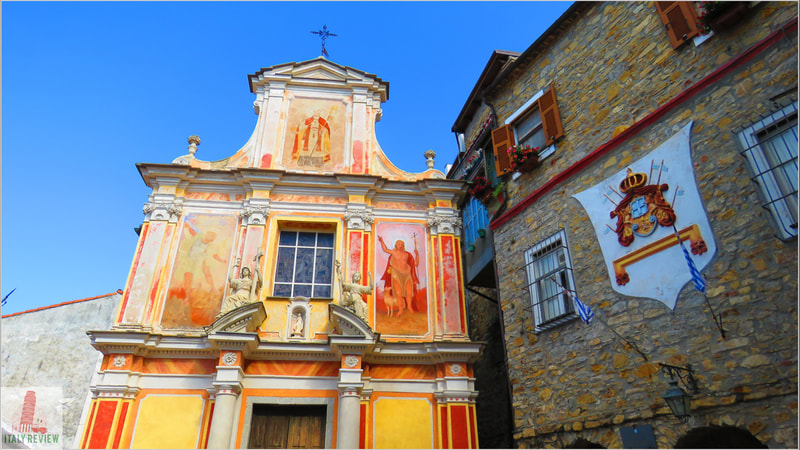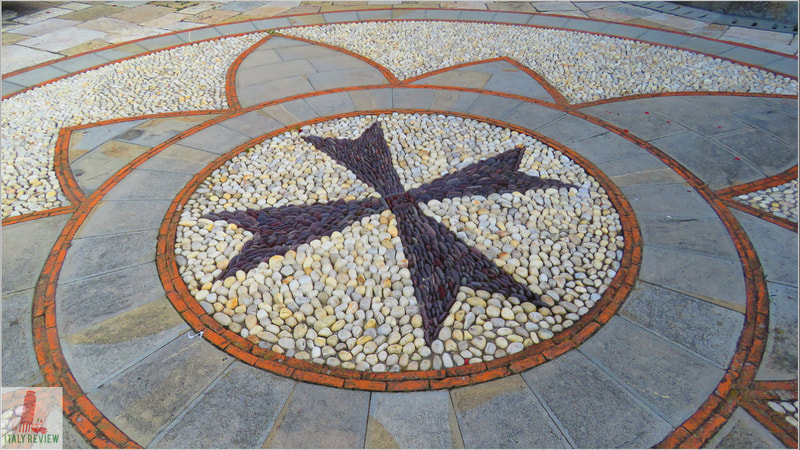Seborga
|
By Dion Protani
|
Latest update: 27 November 2023
|
|
The village of Seborga is situated within the Province of Imperia and has a population of around 300 residents.
It stands at an elevation of 517 metres above sea level and is included in the list of Borghi Più Belli d'Italia (most beautiful villages in Italy). Places of interest nearby include the towns of Ospedaletti, Bordighera, Sanremo, Bussana and Perinaldo. |
Related links
Profile
Seborga is a charming and unique village located in the Liguria region of northern Italy. Perched on a hilltop, Seborga offers stunning views of the surrounding countryside and the Mediterranean Sea. What makes Seborga particularly interesting is its status as a self-proclaimed principality, which adds a touch of whimsy and intrigue to the town's atmosphere.
History
Seborga's history is fascinating and somewhat unconventional. According to local legend, the village was once part of the medieval Kingdom of Sardinia and, in the 10th century, was granted independence by the Holy Roman Emperor Otto III.
The town then became a principality, and its sovereignty was recognized for centuries. However, in the 18th century, the principality was somehow excluded from the unification of Italy, leading to the current debate about its status.
In the 1960s, some residents of Seborga started claiming that the town was never officially annexed to Italy, and they began advocating for the restoration of its independence.
This led to the self-proclamation of Seborga as a sovereign micro-nation. While the claim is not officially recognized by the Italian government or the international community, the people of Seborga continue to celebrate their unique identity and traditions.
The town then became a principality, and its sovereignty was recognized for centuries. However, in the 18th century, the principality was somehow excluded from the unification of Italy, leading to the current debate about its status.
In the 1960s, some residents of Seborga started claiming that the town was never officially annexed to Italy, and they began advocating for the restoration of its independence.
This led to the self-proclamation of Seborga as a sovereign micro-nation. While the claim is not officially recognized by the Italian government or the international community, the people of Seborga continue to celebrate their unique identity and traditions.
Travel
To reach Seborga, you can fly into Nice Côte d'Azur Airport in France or Genoa Cristoforo Colombo Airport in Italy and then travel to the village by car or public transport. Seborga is relatively small, so you can easily explore the town on foot.
Highlights and nearby attractions
- Piazza dei Martiri: The main square of Seborga, Piazza dei Martiri, is a lovely place to start your visit. Admire the 17th-century Church of San Martino and the Town Hall, both of which contribute to the town's quaint atmosphere.
- The Principality of Seborga: Take a walk through the narrow streets and alleys to discover the unique royal and historical symbols associated with Seborga's self-proclaimed principality, including the coat of arms and flag.
- Olive Oil Production: Like many towns in Liguria, Seborga is also known for its olive oil production. Tourists can learn about the traditional olive oil making process and taste some of the locally-produced olive oils.
- Panoramic Views: Climb to the highest points in Seborga to enjoy breathtaking panoramic views of the Mediterranean Sea and the surrounding hills and valleys.
- Local Festivals: If you visit during the summer months, you might have the opportunity to participate in some of Seborga's colorful local festivals, where traditional dances, music, and gastronomy take center stage.
- Nearby Attractions: Seborga's location allows easy access to other attractions in Liguria, such as the nearby coastal towns of Bordighera and Ventimiglia, as well as the beautiful Italian Riviera.
Comune di Seborga
|
Province: Imperia
Region: Liguria Population: 281 (source: ISTAT 1 January 2022) Size: 5 km² Elevation: 517 metres Close by: Ospedaletti, Bordighera, Sanremo, Bussana, Perinaldo Recommended accommodation: Royal Hotel Sanremo (22 km) |
|
One of I Borghi più belli d'Italia (Italy's Most Beautiful Villages)
Listing headline: Riposarsi all'Ombra (Take a Rest in the Shade) |
Awarded the Bandiera Arancione (Orange Flag)
Since: 2009 1 of 15 in Liguria listed by Touring Club Italiano |























